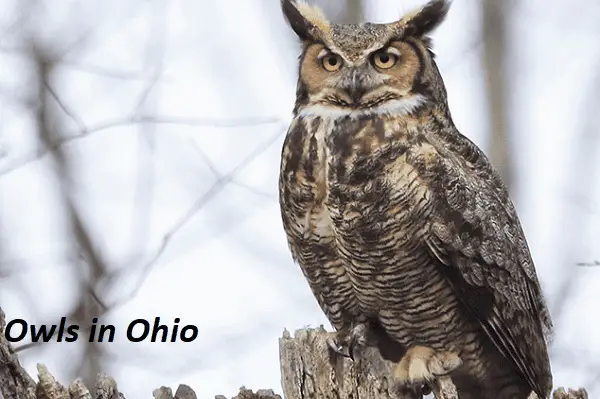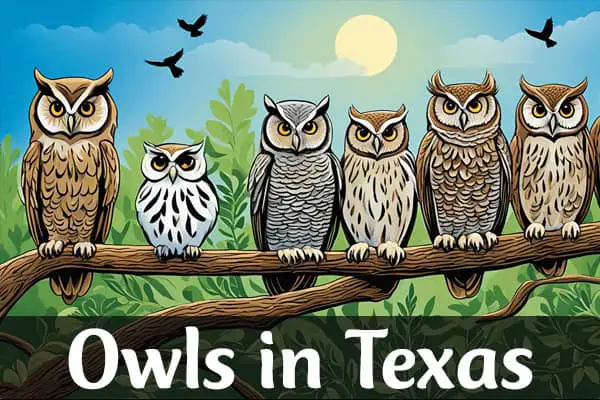8 Types of Owls in Virginia (With Photos)
Did you know Virginia has eight owls? The Great Horned Owl has a huge wingspan of up to 5 feet, and the Northern Saw-Whet Owl is very hard to find. Owls in Virginia are amazing and play a big role in the ecosystem.
Whether you love birds or are just curious, watching owls in Virginia is exciting. In this article, we’ll look at different owl species in Virginia. We’ll talk about their special traits and where they live. This guide will help you understand and enjoy these night birds more.
Introduction to Owls in Virginia
Virginia is home to many owl species. These birds are important in local ecosystems. They have special features that make them interesting to study and watch.
There are five common owl species in Virginia. Plus, four rare ones. Each owl has its own look and role in nature.
When looking for owls in Virginia, you might see great horned owls, barred owls, and eastern screech-owls. These birds live in different places like forests, grasslands, and wetlands. The variety of habitats means you can see different owls at different times.
Owls migrate in Virginia during fall and spring, and you see more of them during these seasons. Watching their migrations helps us appreciate these birds and their role in nature.
| Owl Species | Length (inches) | Wingspan (inches) |
|---|---|---|
| Great Horned Owl | 22 | 44 |
| Barred Owl | 21 | 42 |
| Eastern Screech Owl | 8.5 | 20 |
| Barn Owl | 16 | 42 |
| Short-eared Owl | 15 | 38 |
| Northern Saw-whet Owl | 8 | 17 |
| Long-eared Owl | 15 | 36 |
1. Great Horned Owl
The Great Horned Owl is a symbol of strength and mystery in Virginia. These birds have tufted ears and a mottled coat. They are big, with a wingspan almost five feet, and play a key role in their ecosystem.

Identification and Characteristics
It’s easy to spot a Great Horned Owl. They look regal with their ear tufts and yellow eyes. They can live in many places, from forests to suburbs. Their sharp hearing helps them hunt at dawn, dusk, and night.
Habitat and Distribution in Virginia
Great Horned Owls are found all over Virginia. They like tree hollows and cliff ledges for nesting. This makes them a big part of Virginia’s owl population. To see them, check out wooded parks and natural reserves.
| Feature | Detail |
|---|---|
| Wingspan | Nearly 5 feet |
| Preferred Habitat | Forests, swamps, and urban areas |
| Diet | Small rodents, birds, fish, insects |
| Nesting Preferences | Tree hollows and cliff ledges |
| Threats | Habitat loss, human development |
| Role in Ecosystem | Control rodent populations |
2. Barred Owl
The Barred Owl, known as *Strix varia*, is famous for its call that sounds like “who-cooks-for-you.” This call helps identify them in the wild. They live in the eastern United States and love Virginia’s forests, swamps, and parks. Their unique calls and behaviours make them a hit with Owl fans.
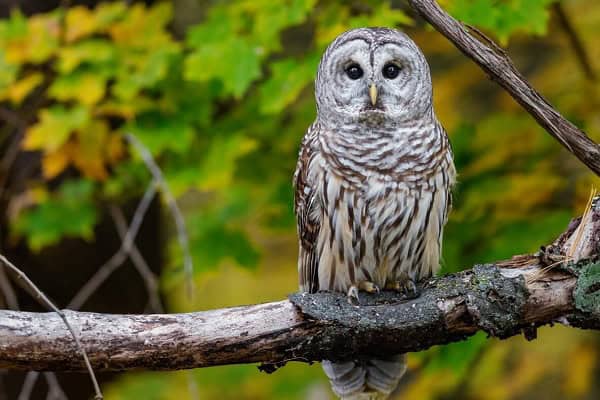
Distinct Features and Calls
Barred Owls have a sturdy body, big dark brown eyes, and a round head. They don’t have ear tufts like some owls. Their most famous call is “who-cooks-for-you.”
They have amazing eyesight, better than humans in the dark. They can hear sounds much fainter than humans. They hunt at night, eating small mammals, birds, reptiles, amphibians, and insects.
Preferred Habitats in Virginia
In Virginia, Barred Owls live in Fauquier, Loudoun, and Rappahannock counties. They love mature forests for nesting and use tree cavities and other spots.
These owls stay in Virginia all year unless food is hard to find. They live in many places, including areas where people go. Seeing Barred Owls is a sign of a healthy environment, which is why we need to protect them in Virginia.
3. Barn Owl
The Barn Owl is a stunning example of Virginia’s owl species. It has a unique mix of elegance and hunting skill. With its heart-shaped face and silent flight, it plays a key role in controlling rodents in Virginia.
Knowing about its physical traits and where it lives can make you appreciate it more.
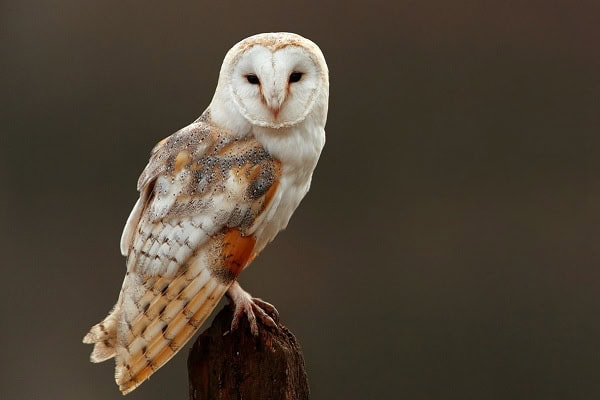
Physical Appearance and Behavior
The Barn Owl is known for its special features. It has a wingspan up to 45 inches and a light, mottled body with white underparts. This owl is a silent hunter, mainly eating rodents at night.
Within the first year, 70% of Barn Owls face dangers. They eat small mammals like voles and shrews. A pair and their chicks eat over 3,000 rodents a year.
Habitat Preferences and Nesting Sites
Barn Owls like open areas with lots of prey. In Virginia, they live in tall grassy fields, rough meadows, and marshes. These places offer food and safe places to nest.
They often nest in old barns and silos, showing they can adapt. Breeding pairs lay 4 to 11 eggs, averaging four per nest. In Virginia, the best time to see them is from March to June.
Young Barn Owls leave the nest in 7 to 8 weeks and start learning to hunt between 8 and 14 weeks old.
4. Eastern Screech Owl
The Eastern Screech Owl is a fascinating bird in Virginia. It’s easy to spot because of its unique look and how well it adapts. This small owl has two colours: grey and reddish-brown. About one-third of them are red, especially in the East.
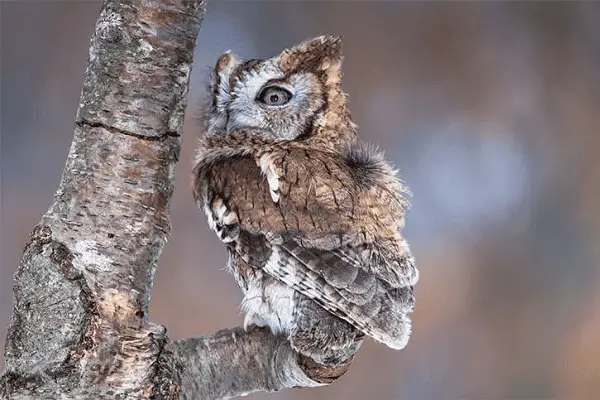
This owl loves different places to live in Virginia, which shows how well it can adapt to many kinds of environments.
Colour Variants and Size
Eastern Screech Owls come in two main colours: grey and reddish-brown. In Virginia, you might see a mix of these colours. Adult males are about 8.2 inches tall with a 21-inch wingspan. Females are a bit bigger, reaching 9.2 inches tall and having a 22-inch wingspan.
Interestingly, the red owls have a faster metabolism than the grey owls.
Habitat Adaptability and Diet
This owl is not fussy about where it lives. It can be found in cities, suburbs, and natural areas. It loves parks, orchards, and wooded places.
Its diet consists mostly of insects and small mammals, which helps with Virginia owl conservation. Thanks to conservation efforts, these owls can do well even as cities grow.
5. Short-Eared Owl
The Short-Eared Owl (*Asio flammeus*) is a unique bird. It hunts over grasslands during twilight. Its mottled plumage blends well with its surroundings.
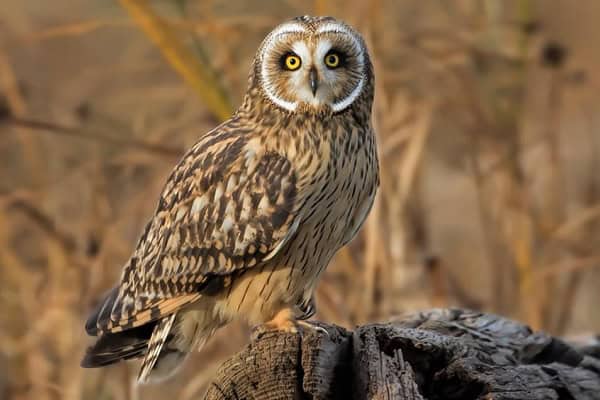
It has a rounded head and a distinctive facial disc. Birdwatchers find it exciting to spot this owl in the wild.
Identification and Unique Traits
Short-eared owls have unique features. Their long, pointed wings allow them to fly agilely at low altitudes, and their mottled feathers help them hide in grasslands.
They are known for their low, buoyant flight. This is often accompanied by loud calls during mating season.
Where to Spot Short-Eared Owls in Virginia
Short-eared owls are found in open fields, marshes, and coastal areas in Virginia. They are more likely to be seen during migration periods. Some top spots include:
- Chincoteague National Wildlife Refuge
- Quantico National Park
- Holliday Lake State Park
- Meadowood Recreation Area
Conservation of their habitats is key due to their declining numbers. Enjoy watching these owls while respecting their environment.
6. Long-Eared Owl
The Long-Eared Owl (Asio otus) is a stunning example of Virginia’s owl species. It’s known for its ear tufts and amazing ability to hide. This bird is crow-sized, with rich, earth-toned feathers and bright orange-yellow eyes.
These owls live in dense woodlands, making them hard to spot in Virginia. They hide in thick cover during the day and hunt for small mammals in meadows and marshes at night.
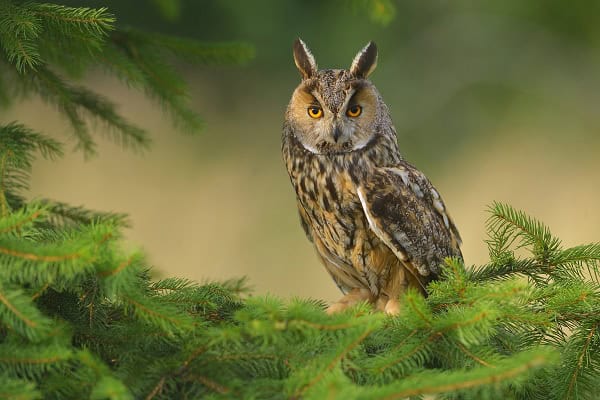
Long-eared owls are found in temperate forests across the northern hemisphere, including Virginia. You might see them at places like Huntley Meadows Park or the Mason Neck loop. These spots are close to Washington, D.C.
Though owls are hard to find, efforts are being made to save their homes. These efforts help keep their habitats safe and improve the experience for people who want to see owls in Virginia.
7. Northern Saw-Whet Owl
The Northern Saw-Whet Owl is one of the smallest raptors in eastern North America. It has a round face and big yellow eyes. Its soft calls echo through dense forests, making it special in Virginia’s bird world.
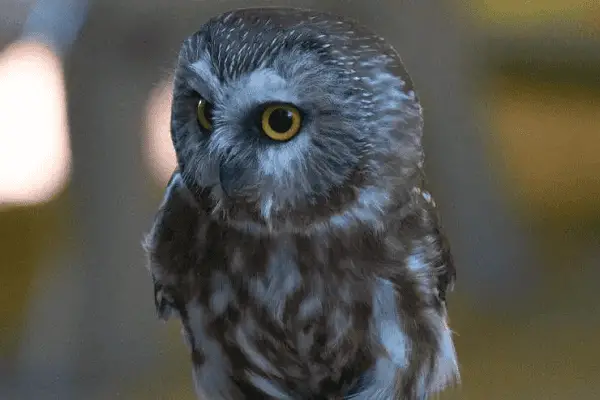
Knowing about this owl’s traits and habits is valuable to our ecosystem. It’s also why we must protect it.
Characteristics and Behavior
Male Northern Saw-Whet Owls weigh about 78 grams. Females are a bit heavier, around 96 grams. This makes them lighter than many other owls.
More females are found at banding sites, with a three to four-to-one ratio. They lay big clutches of eggs, sometimes up to nine, when there are lots of rodents. In boom years, nearly a thousand owls are banded in Pennsylvania, mostly young ones.
Conservation Status in Virginia
The Northern Saw-Whet Owl needs special care in Virginia because of its habitat needs and climate change. It’s not endangered, but keeping its population stable is key. Programs like the banding station at Highland Retreat Camp since 2001 help a lot.
This station tracks the owls’ migrations, helping to ensure they can continue living in our local areas.
| Characteristic | Detail |
|---|---|
| Weight (Males) | Approximately 78 grams |
| Weight (Females) | Approximately 96 grams |
| Egg Clutch Size | Up to nine during boom years |
| Migration Timing | Starts southward migration in late September |
| Common Sightings in Virginia | Rare fall transients and winter residents |
8. Snowy Owl: A Rare Visitor
The Snowy Owl (Bubo scandiacus) is a stunning bird with white feathers and yellow eyes. It lives near the North Pole but sometimes comes to Virginia, which is a big deal for bird watchers.
They migrate when food is scarce in their usual places, making winter in Virginia a good time to see them.
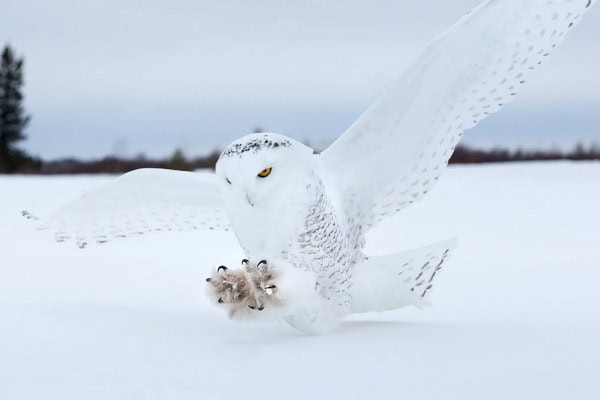
Identification and Habitat
The Snowy Owl is the heaviest owl, weighing about four pounds. It has thick feathers to stay warm, and its wings are four to five feet wide, helping it hunt well.
Unlike other owls, they hunt during the day. They look for lemmings and rodents in open areas.
Sightings and Occurrence in Virginia
Virginia has seen Snowy Owls a few times. A big sighting in Mt. Crawford lasted almost ten days. Many bird lovers came, including some from Richmond and Hampton.
They saw not just Snowy Owls but also American kestrels and a red-tailed hawk.
In recent years, Snowy Owls have been spotted in different places in Virginia. The Outer Banks and Washington, DC, are hotspots. Winter storms make it easier to see them.
Seeing Snowy Owls is rare, especially in West Virginia. It shows how important it is to watch their migration and protect their homes.
Owls in Virginia: Essential Roles in the Ecosystem
Owls in Virginia are key to the ecosystem. They control pests by eating small mammals and other animals, keeping the environment healthy and balanced.
There are eight owl species in Virginia, each playing a special role. Barred owls, for example, have deep brown eyes. They stay in the same place for years, raising 2-4 eggs at a time, which helps keep their numbers steady and controls rodent populations.
It’s very important to protect owls in Virginia. Conservation helps these birds and the ecosystems they live in. You can help by supporting habitat preservation and raising awareness.
Learning about owls’ roles in Virginia connects you to nature. It makes you want to protect them and the environment. Owls are vital to keeping our world healthy.
Read More🐦Related Articles:
| Owls in Florida |
| Yellow Birds Found in Colorado |
| Michigan Duck Hunting Season: Dates & Info |
| Owls in Michigan |
| Backyard Birds of Hawaii |
Conclusion
Owls in Virginia are truly fascinating. Each species has its own special traits. The Great Horned Owl, for example, has a big wingspan and eats a wide variety of food.
These birds help keep rodent numbers in check and play a big role in keeping their habitats balanced, which shows how vital they are to our environment.
But, owls face many dangers like losing their homes and getting sick. Conservation efforts in Virginia are working hard to help them. Your help is needed to protect their homes.
By learning about and helping protect owls, we can save them. We can ensure the Barred Owl’s hoots and the Barn Owl’s silent flight are heard for years to come.




